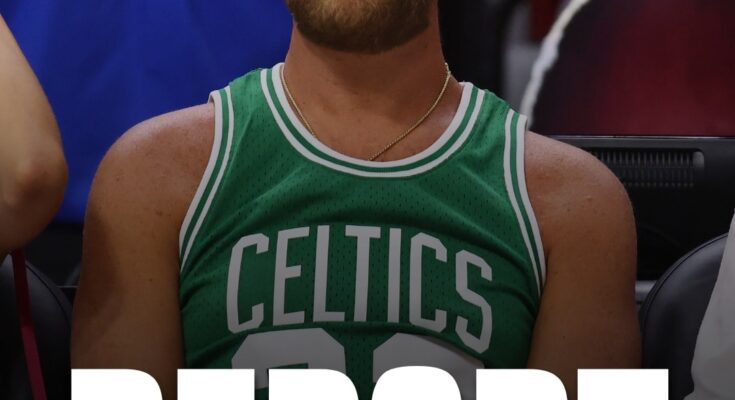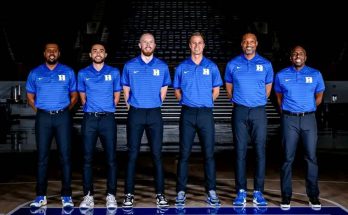The week leading up to a season opener is always filled with storylines, hype, and a little bit of controversy. For Ohio State, the buildup to their highly anticipated matchup against Texas this Saturday took an unexpected turn when reports circulated that the Buckeyes had barred Dave Portnoy and Barstool Sports from campus. Almost immediately, the news set off a firestorm across college football media, fan bases, and social platforms. The alleged “ban” created an impression that Ohio State had drawn a hard line against one of the most recognizable media brands in the country. But as the story gained traction, the school stepped forward with a clarification: Ohio State insists it “did not ban anyone,” directly disputing the initial wave of reports.
This kind of episode illustrates how easily narratives can spiral in today’s fast-paced sports media environment, particularly when it involves polarizing figures like Portnoy and a program as nationally scrutinized as Ohio State. To understand the magnitude of the situation, it’s worth exploring not only what was reported, but also how the clarification changes the perception, and what the implications might be for both the Buckeyes and Barstool Sports moving forward.
The original reports suggested Ohio State had explicitly told Portnoy and his team they were not welcome on campus for the opening weekend showdown against Texas. Given the scale of this game—an intersectional battle between two powerhouse programs with playoff implications—the news spread quickly. Fans and pundits debated whether Ohio State’s alleged decision was justified or whether it represented an unnecessary entanglement with a media entity that thrives on controversy. To some, banning Portnoy seemed like an attempt to avoid distraction. To others, it appeared heavy-handed and out of step with the culture of college football, where media access and fan interaction often blend together in unpredictable ways.
But then came the pushback. Ohio State, responding directly to the reports, stated plainly that no one was “banned” from campus. The university’s message sought to reframe the narrative, emphasizing that while they control access to official credentials, campus itself is an open environment, particularly on game days. In other words, Portnoy and Barstool may not have received media access, but that’s not the same as being barred from stepping foot on Ohio State’s grounds. For a fan base that prizes accuracy and for a media landscape that loves clear narratives, the distinction is critical.
Still, the clarification hasn’t silenced the debate. Many observers continue to dissect the situation, wondering if the denial is a matter of semantics. Was Barstool actually denied formal access in the form of press passes or credentialed coverage? If so, does that constitute a “ban” in practical terms, even if the school disputes the language? These are the kinds of questions that keep stories like this alive and ensure that both sides—the university and Barstool—remain in the headlines.
For Dave Portnoy, the episode is a familiar one. Barstool Sports has long lived at the intersection of sports, culture, and controversy. Whether it’s Portnoy’s outspoken persona, the company’s embrace of edgy humor, or its history of clashing with traditional media institutions, Barstool rarely finds itself far from a headline. Portnoy, in particular, has cultivated an image as both provocateur and underdog, someone who thrives when institutions push back against him. In fact, moments like these often serve to boost Barstool’s visibility and reinforce its outsider brand. If fans come to believe Ohio State tried to keep Barstool out, the narrative feeds directly into the company’s identity as the disruptive force in sports media that doesn’t play by traditional rules.
From Ohio State’s perspective, however, the situation is delicate. The Buckeyes are not just a football team; they are one of the most visible athletic brands in the country, representing a university with tens of thousands of students, a massive alumni base, and enormous influence across the college sports landscape. Every decision—especially during football season—is magnified. By insisting they did not ban anyone, Ohio State signals a desire to avoid the optics of censorship or overreach. At the same time, they maintain control over how official media access is distributed, which is a standard practice across college athletics. Programs vet and manage credentials carefully, ensuring coverage aligns with professional standards. Whether Barstool meets those standards is a question each school must decide individually.
The timing of the controversy also matters. This isn’t just any season opener. Ohio State hosting Texas is one of the biggest games of the early season, a marquee matchup with national championship implications. The Buckeyes enter the year with sky-high expectations, boasting a roster loaded with NFL talent and the pressure of living up to the program’s historic standard. Texas, meanwhile, arrives in Columbus riding its own resurgence, eager to prove it belongs among the nation’s elite again. With College GameDay, national networks, and countless media outlets descending on Ohio’s capital, the atmosphere is already charged. Against that backdrop, the idea of a high-profile personality like Portnoy showing up only adds to the drama.
Whether or not Portnoy attends the game, Barstool’s presence will still loom large. The company has a devoted following, especially among younger fans who engage with sports through podcasts, social media clips, and alternative coverage rather than traditional television broadcasts. For many of those fans, Barstool’s potential exclusion—or even just the perception of exclusion—creates a rallying cry. It becomes a story about authenticity versus establishment, about who gets to cover the sport and how. In that sense, even Ohio State’s clarification may not fully put the issue to rest.
The broader implications for college football also can’t be ignored. As the sport evolves in the era of NIL, expanded playoffs, and massive media contracts, the lines between official coverage, fan-driven content, and influencer-style commentary continue to blur. Schools like Ohio State must navigate how to engage with non-traditional outlets without losing control of their image. Barstool represents one extreme of that spectrum—a company with massive reach and cultural impact, but also with a reputation that makes some institutions wary. Other programs have embraced Barstool partnerships, particularly in the NIL space, while some have kept the brand at arm’s length. Ohio State’s clarification may simply be an effort to walk the line: not banning Barstool outright, but also not extending the same privileges it does to traditional outlets.
For fans, the episode is a reminder of how much college football is shaped not only by what happens on the field but also by the stories swirling around it. The clash between Ohio State and Texas will be determined by quarterbacks, defensive schemes, and coaching decisions, but the pregame buzz has been fueled by an off-field dispute about media access. That, in itself, speaks to the way the sport operates in 2025—where perception, branding, and digital engagement can generate as much discussion as the X’s and O’s.
In the days leading up to kickoff, speculation will likely continue. Will Portnoy show up in Columbus anyway, even without official credentials? If he does, will fans rally around him, or will Ohio State’s message—that no one was banned—be enough to defuse the drama? And if Barstool finds a way to cover the game in its trademark style regardless of access, what does that mean for the traditional gatekeepers of college football coverage?
At its core, this story isn’t just about a supposed ban that wasn’t. It’s about how major institutions like Ohio State manage their public image in a media world where control is increasingly difficult to maintain. It’s about how figures like Portnoy thrive on confrontation and controversy, turning even the suggestion of exclusion into a win for their brand. And it’s about how fans, hungry for both football and the narratives surrounding it, fuel the cycle by engaging, debating, and amplifying the story.
When the game kicks off on Saturday, all eyes will shift to the field, where two of the sport’s most powerful programs will battle under the lights. Yet in the background, the conversation about Ohio State, Barstool Sports, and who gets access to the heart of college football will linger. The Buckeyes say they did not ban anyone. The debate, however, will continue long after the final whistle blows.
In the end, perhaps the most fitting outcome is that both sides get what they want. Ohio State projects itself as a professional, measured institution focused on football, not distractions. Barstool, meanwhile, feeds on the narrative of being kept out, turning the controversy into content that resonates with its audience. And the fans? They get another layer of drama to consume in a sport that never seems to stop producing it.
What started as a headline about a ban has morphed into a broader commentary on sports, media, and perception. Ohio State’s denial may settle the official record, but the story’s real impact lies in the way it reveals the evolving dynamics of college football in the digital age. On Saturday, the Buckeyes and Longhorns will decide their fate on the field. Off the field, the clash between tradition and disruption continues, with Barstool and Ohio State serving as the latest flashpoint.



